The Grand Junction Climbing Center was one of the dungeon gyms of old. Built in 1996 by a couple of local climbers it was built in an old industrial building that used to be used by the rail road to work on train engines. This was how most gyms were built back then, either in warehouses or industrial building. They were usually dark and danky and the only people that went to them were the die-hard climbers looking to train for climbing harder outside. GJCC was known by a few names over the years, it started off as Rock of Ages Climbery and from there went to Core Elements before the owner just before me went generic and I followed suit not changing the name. It had had 4 owners before me and was probably going to just shut down at the point where I bought it.
On St Patrick’s Day 2010 my now ex-wife and I sat down with a guy named Patrick and signed paper work to buy the gym. At that point it still had all the original walls with a couple more having been built in 1999. Most of the holds were the original resign holds though there was a handful of new holds that were purchased over the years but not enough to really make a difference. Because this was crammed into an old industrial space the gym actually started on the second floor so while it looked like it was going to be a really tall gym from the outside it was disappointing when you walked into it. The main gym was on the second floor with a bouldering area in a loft and a hole in the floor that went down to the first floor off to the side. Unfortunately, the wall that came up from the downstairs had a bunch of building structure in the way preventing it from going all the way to the ceiling’s high point. It was one of the shortest walls in the gym even though it started lower. I give a lot of credit to the original owners for making good use of the space that they had, though I was looking for a new building to move into as soon as my lease ran out.
When I came in, I knew a bunch of changes needed to be made to get people to come back into the gym. The gym had built a reputation and most local climbers, including myself, had been refusing to go in because of the way it had been run. I needed to make big changes right away to let people know that a new way of thinking had come in with the new owners. In the first year I tore out one of the old walls and built a new top out bouldering wall. I also changed a couple of the rope walls making them more usable. One of those rope walls was about 15 ft of vertical, then 10 ft of horizontal roof, followed by 13 ft of vertical. While this was a cool feature for the stronger climbers no one else could climb on it and in the first 6 months of owning the gym I counted 8 people climbing the wall, it needed to change. I made a more blocky, still overhanging wall that was more obtainable by more people. After the change it became one of our most popular walls.
In the first year we were really struggling financially so these projects were built entirely by me with help from a couple of volunteers and using the cheapest materials, that’s why we built the frame work out of 2X6 instead of steel even though I was a welder. I made sure not to compromise strength of course.
We made it through our first year and the business was starting to grow, though slowly at this point. A few of the local hard climbers were bugging me to build a training room of some sort, or at least put in a campus board and a few other pieces so people could train for climbing specificaly. The problem was there was no room in the space I already had, I either had to rent more space or take away climbing space. I barely had two nickels to rub together and I was still working full time as a welder while not taking home any money from the gym. I was regularly working 100-110 hrs a week and wasn’t about to spend more money to make 5 people happy, even if I was one of the 5. Then Rob Pizem moved to town. Rob was a pro climber that had an idea for a training program that could be run at the gym that would require a room to train in. This made more sense, this was something everyone could benefit from and made it worth renting more space.
When I first took over the gym, the space downstairs wasn’t included and the land lord was looking to close in the floor and remove the wall that was down there. We made the deal to take over this space just before they started, we called it the pit. The climbing wall had another roof feature like the one I coved up the year before so I extended the wall straight down to the floor cutting out the roof. The wall was about 15 deg overhung the entire way. Behind the wall, in the space where the roof was, I put in several of the training elements including an adjustable angle systems board, dips/leg lift station, hang boards, and sloper pullup bar. Out in the open area I mounted a campus board and I built a bunch of other here and there things to train with.
With the completion of the training room Piz started bringing in more and more people to train, memberships grew, the community grew, the bad feel of the old gym faded and a lot of the separatism that had existed between trad climbers, sport climbers, and boulderers started to fade (at least in the gym haha). More than this the climbing community as a whole got stronger, we hosted a fundraiser comp for the WCCC every year and in the first year we had 9 people attend, by the third year we had over 100 and we regularly had 25-50 people show up for trail days.

Campus Board
When I first started climbing, I developed tendinitis in my wrist and elbow from campus boarding. I probably started too early but the main problem was with the rotation that is required to turn your hands to the right orientation to grab a campus rung when the rung is straight. It’s not a natural position, if you hold your hands out in front of you as if to hold a campus rung, you’ll see you have to work to rotate your hands to the right orientation. This might not cause an injury for everyone but it did for me. When I started to design the campus board, I set out to make one that was more ergonomic and it paid off, the entire time I used that board I never felt the strain that caused the tendinitis, though jumping on a hang board still does. At one point an orthopedic surgeon climbed at my gym when he passed through town. When he saw the board, he complimented me on it and said they should all be made this way, he even asked me for the plans so he could build one himself.
I took the idea from my kayak paddle. Bent shaft kayak paddles are shaped so that your hands sit in the right position making it more comfortable but also allowing you to use more power through your stroke. I took the angle of that, which is about 45 degrees, and incorporated it in. I made three rows and used Metolius rungs as well as some custom sloper rungs made from PVC pipe.
Unfortunately, I lost the autocad drawings I had with all of the layout to build one of these, if someone bought me a sixer I might get motivated to draw it all up again but other wise you’ll have to lay it out yourself, sorry. With that, everything in this description is from memory and I might have gotten a few things wrong.
I started with 2X8 ribs and cut the wave pattern into them to mount the plywood to. I used two layers of plywood, since it was going in a commercial gym, I wanted to make sure no one would ever rip a rung off the board. I used 2X4s down the sides.
To mount it to the wall I started by adding blocking to the wall it was attached to, to shore it up, that wall is hell for stout but I don’t have any pictures of that so you’ll have to trust me. At the bottom I mounted a 2X6 to take the weight and made two kickers that came back attaching it, keeping it from tipping away from the wall. This thing didn’t move even with my 200+ lbs dynoing on it (feet on, I wasn’t that strong).
I then mounted the rungs. On the left I used Metolius small and medium rungs, painting the smalls red and the med yellow as to not confuse anyone. In the middle I used the Metolius large rungs. On the right, I made the sloper rungs. I cut all of the rungs in half and I used a level to mark my lines so the rungs wouldn’t slope. I can’t for the life of me remember what the spacing was, probably whatever Metolius recommended.
Edit: in the video below I say the spacing is 8″ so there you go.
To make the sloper rungs I used 4” schl 40 PVC pipe and 2x4s with grip tape over the top for texture. I used a table saw to split the pipe down the middle but if you have access to a band saw I would recommend that instead, don’t go pulling a Tommy. I ran the 2X4s through the table saw to cut the corners off at the angle in the drawing. I then screwed the 2X4 to the board and drilled and counter sunk the pipe and screwed it to the 2X4. I’ve seen it done without the 2X4 just screwing the pipe to the board and it felt very…..uhm……… lets just say dynamic. With the 2X4 it’s hell for stout and should hold up for many years.
Now, no one should even consider campusing with their full body weight until they are climbing upper 5.11, getting close to 5.12 because they are far more likely to blow out a tendon then get strong. That said, I wanted to make sure every piece of equipment could be used by anyone regardless of ability so I mounted 1X2 rungs below the board that a person could toe in on to take some weight off and ease the load.

Hang board, Sloper Pullup Bar, Dip/Leg Lift Station
I started by building up a wall that I could mount everything to. I used 2X6 studs, 16 OC and then sheeted it with ¾” plywood. I tied it into the rafters above to keep it from typing over. I just sheeted the side wall with ½” plywood so when people kicked it they wouldn’t punch through the drywall.
I then made a wood frame and mounted the sloper pullup bar to it. I used 3” pipe, I believe. I didn’t coat it and a strange thing happened as people used it, it built up a weird rust pattern the actually made a texture on the pipe where you grabbed it.
Next to that I took one of those pullup/dip/leg lift stands and cut it apart to get the dip/leg lift station. I made a wood frame and since I was working as a welder, I was able to make a slide system that allowed you to move the arms in and out for wider or narrower people. We had our climbing team kids using it as well so it was nice to set it up for the individual.
Next to that I built a box to mount the hang boards with a step out and an upper mounting for another board. This was so you could do repeaters, moving up and down between the upper and lower board. The upper board was hard mounted. I like variety, I’ve also yet to find one hang board that has everything one might need, so when it came to hang boards, I bought a lot of them. With the limited room I had to get creative to be able to mount 8+ hang boards. The solution I came up with was to make a sliding system where you could slide the boards in and out. I made two channels out of 1/8” steel and mounted the boards to two pieces of plywood that fit in the channel. I added 1X2 rungs to the bottom to toe in on just like the campus board.

For some reason I painted this all shit brown, I don’t remember why. I eventually added a counter balance/pully system that allowed you to take weight off so you could work on stuff that was too hard. The one on the pullup bar had enough stroke to work on muscle ups. We had about 200lbs of weight that you could add.
Systems Board
The systems board was probably the most used piece in the training room, I just wish I could have made it about 4 times wider but I didn’t have the room. If I were to ever build a home wall again this would be all I would build, not with systems holds but the adjustable angle flat wall and I would make it as wide and as tall as I could.
The base was 2X6s anchored to the floor and two ¾” plywood gusset sides with 2×6 uprights for the hinge pipe to run through.

I built the wall part of the board with 2X6 studs 16” OC and then drilled a hole through the middle of the studs to run a 1¼” schl 40 steel pipe with a giant washer welded on one end and a washer and roll pin on the other to keep it from sliding out.
There’s no point in training on a board like this over 45 degrees so I mounted chains that acted as a hard stop at 45 degrees and then mounted a 1000 lbs Warn Winch that ran off of AC instead of DC. I also mounted an angle finder on the side so you would know what angle it was at. I just happened to have a nice big steel I beam to mount those to.
From here I mounted the systems holds, the saturation grew over the years as I found more and more good stuff to add to the board. After a while I also added a regular pullup bar to the top for those that couldn’t handle the sloper pull up bar.
The final saturation looked like this. Everything was set up so you could work the same move over and over instead of the new modern way of doing a systems board, just a different workout and given the space it made more sense. The octagons and all the feet were from Pusher/Revolution. The blue feet were slopey and the yellow feet were positive. The HIT Strips (left side rungs) and the blue then orange pinches were Nicros. The Sloper Balls were from Blank Slate and all the rest were Atomik.

These were the big things I made, I made a bunch of smaller things and it seemed as though every time I came up with something new Piz had all new workouts to punish people with. In 2014 a new, more modern gym opened in town and I couldn’t compete, in Jan 2015 I closed my doors and moved on but it was fun while it lasted. Maybe I’ll do it again someday.
A couple of other things I made: jump boxes and the paint can apparatus. I’ll do a write up on the paint can apparatus soon. I made a bunch of other things but can’t remember them all, probably don’t have pictures anyways.
Edit:
Well, someone bought me a sixer so here it is. This is the layout for the board only, you’ll have to figure out your mounting system based on what’s available to you. If you’re having trouble coming up with something email me through the contact page or comment below and I’ll try and help you come up with something. I ran a router with a rounding bit around the outside edge but with plywood this can get funky. If you use a low grade plywood I would round the edges with a sander instead, even with higher grade plywood it can chip out on the end grain at the top and bottom. Be careful, go slow, when in doubt use a sander. You just want to get rid of any sharp edges.
Materials:
- 5 ea 2X8s 8 ft long
- 2 ea 2X4s 8 ft long
- 3 ea 4’X8’ sheets of ¾” plywood
When you lay out the rungs:
- Mount the board as you are going to, mine was at 15 degrees.
- Measure 8” from the top and mark on the point of the nose on each bay
- Then mark every 8” down to the bottom of the board
- From that mark, take a level and mark your lines across the panel on each side of the nose
- Screw your rungs on with the top of the rung on the line
- If you do 2 sizes on a bay mark every 4” and then alternate as you mount the rungs
If you do it right the lines should connect with the lines from the bay next to it. This will keep your rungs straight. If you put two sets in the same bay, I would only put the small and medium or medium and large together, if you put small and large together, you’ll likely hit the large when moving off the small. The slopers should be by themselves for this reason.

I set the bottom of the board at 4 ft which meant I started on my knees for the first rung but it made it so the top wasn’t as high. I’m 6’3” with a +4 ape index and never had issues with this but if you prefer it higher you can move it up. I was setting it up for kids as well as adults.
I used a 15-degree angle which was what was recommended by pretty much everything I read. You can go more or less, I wouldn’t go more than 20 or less than 12. Less than 12 and you’ll be scraping your body against the board the whole way up and more than 20 the rungs will be less positive.
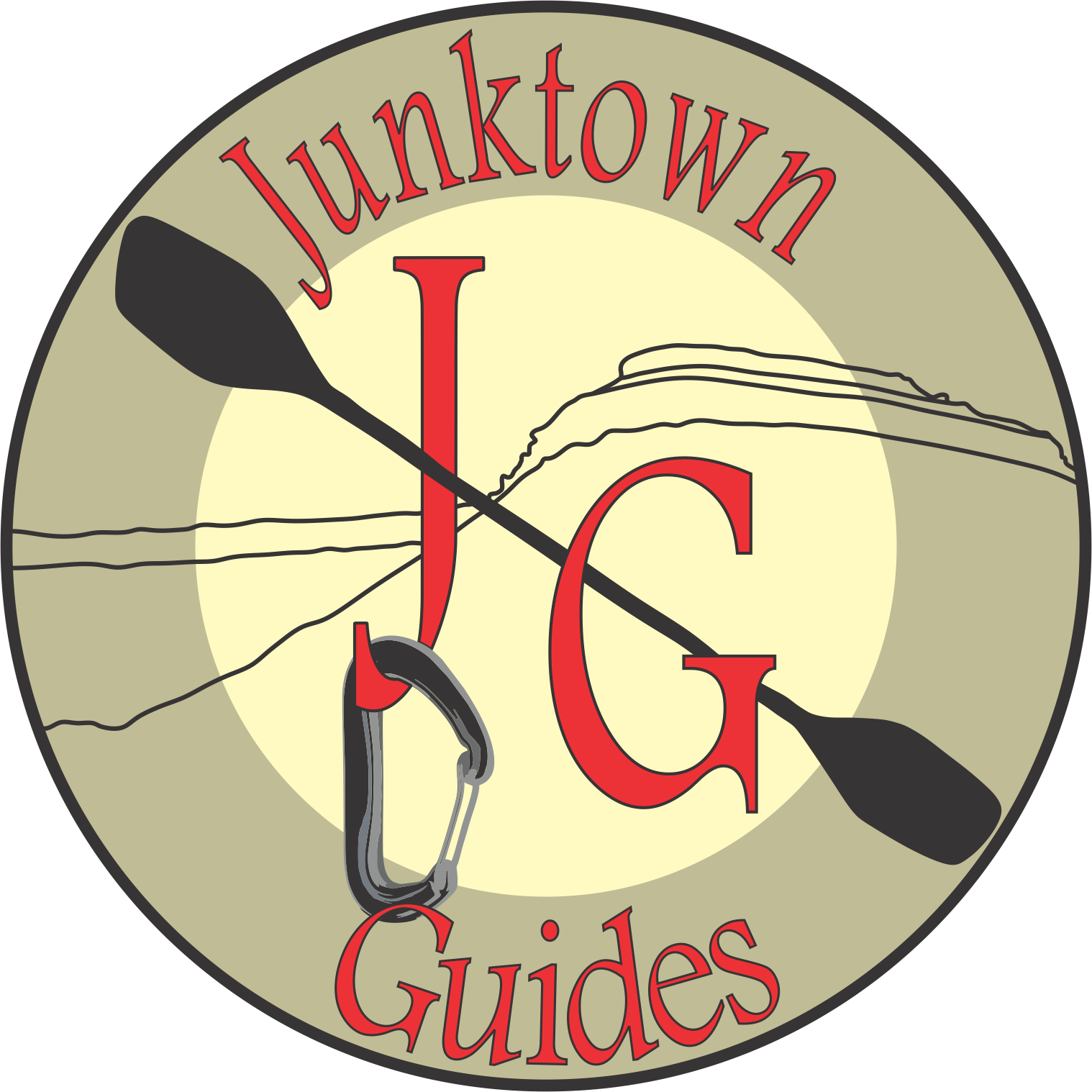

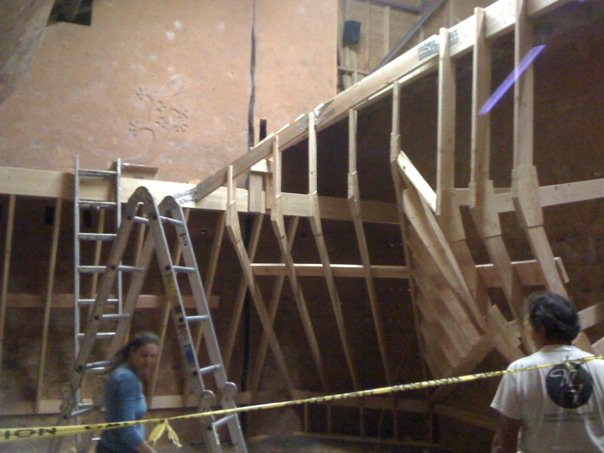
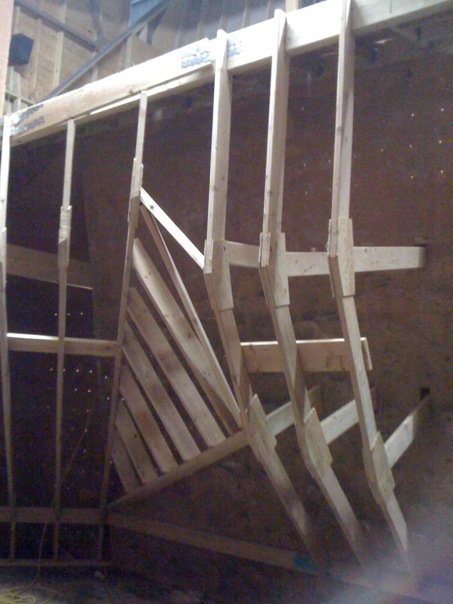
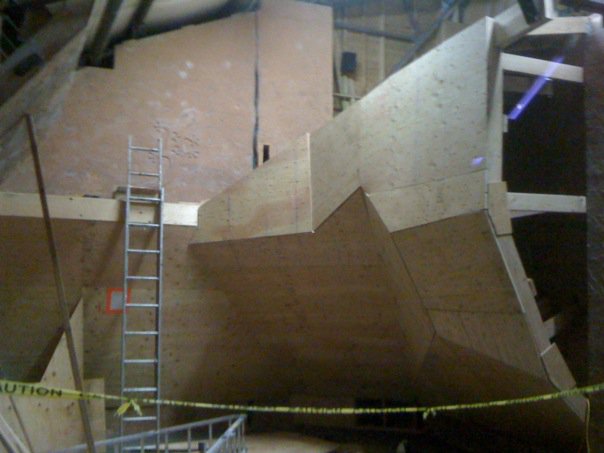


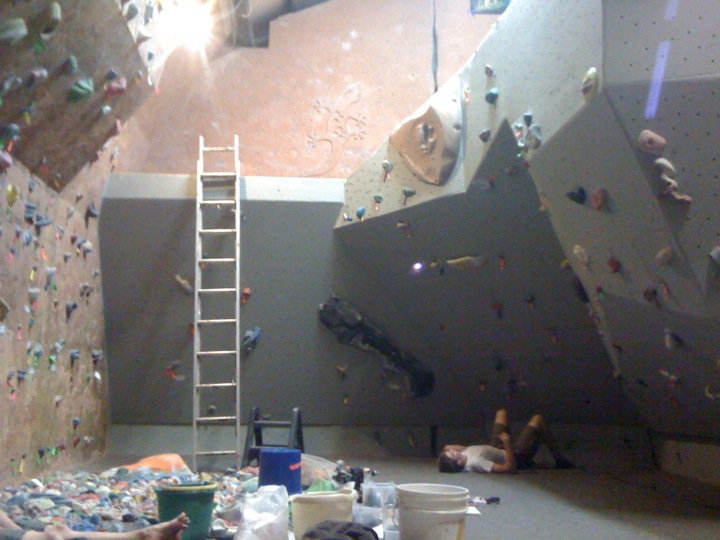
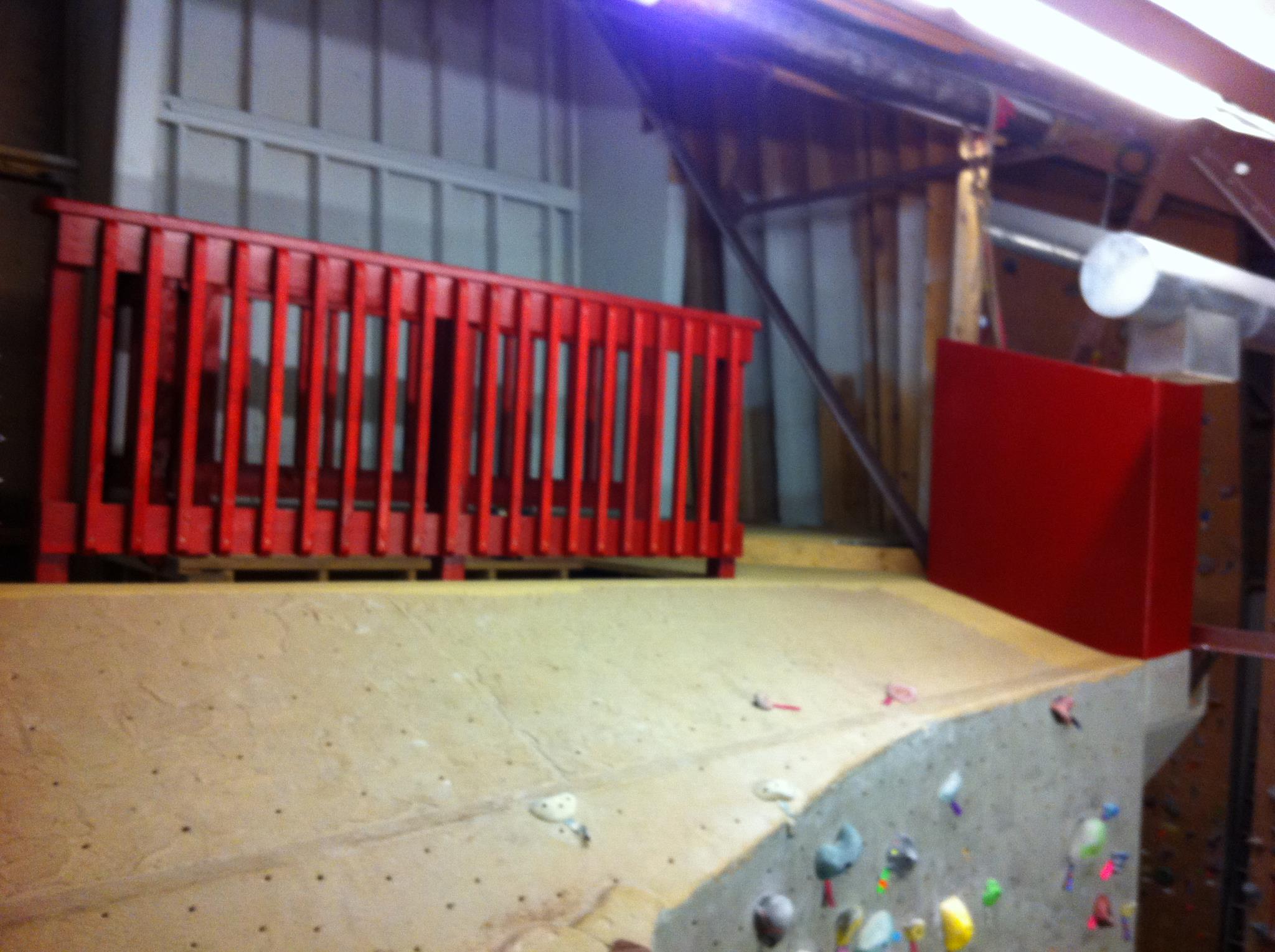
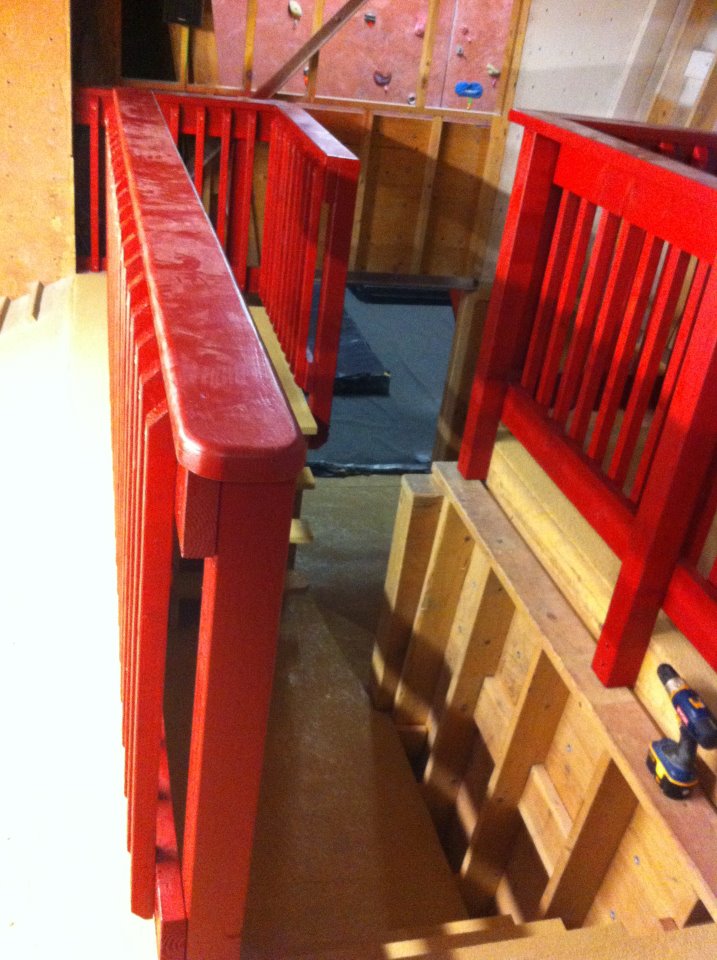
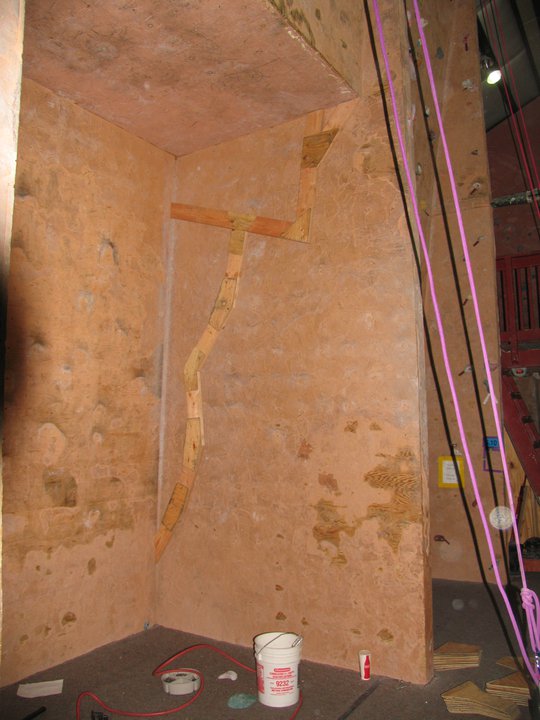
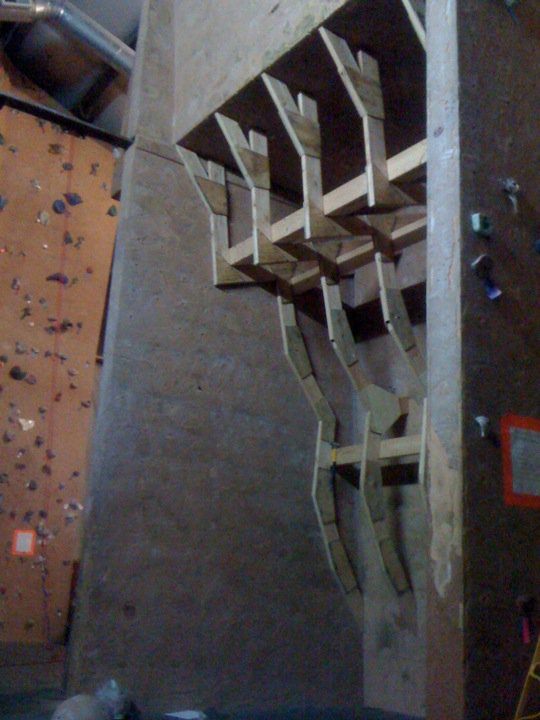

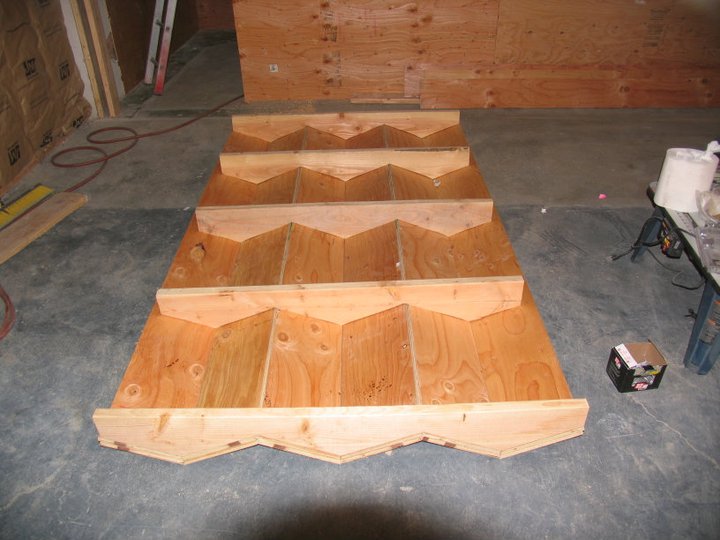
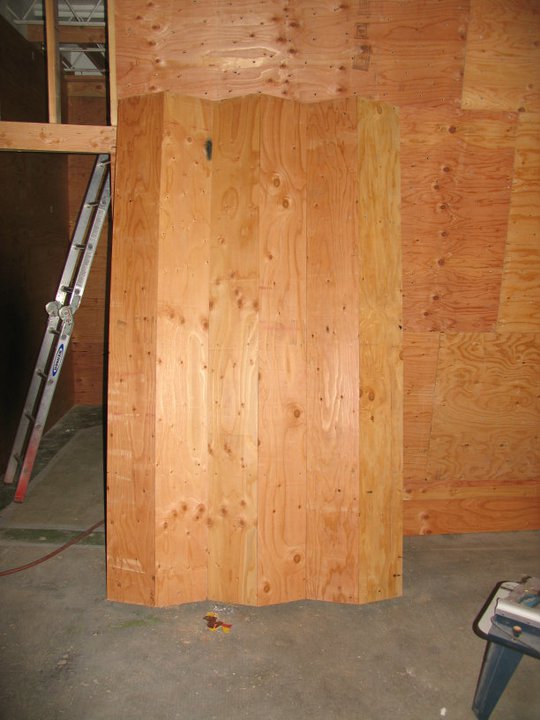
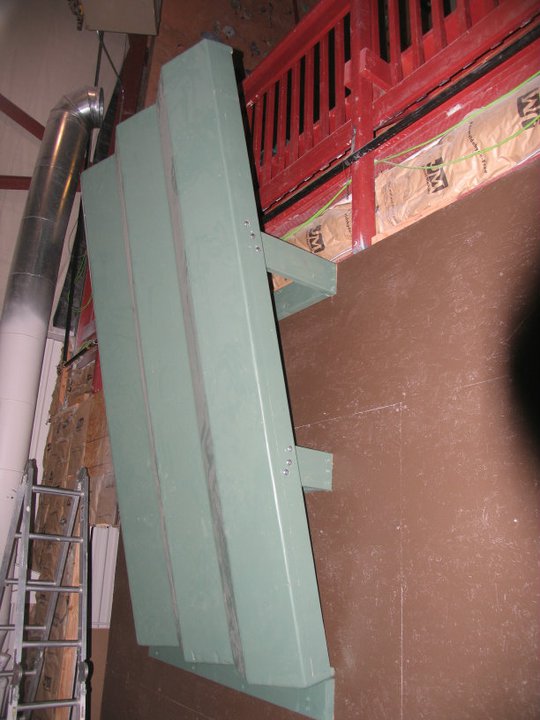
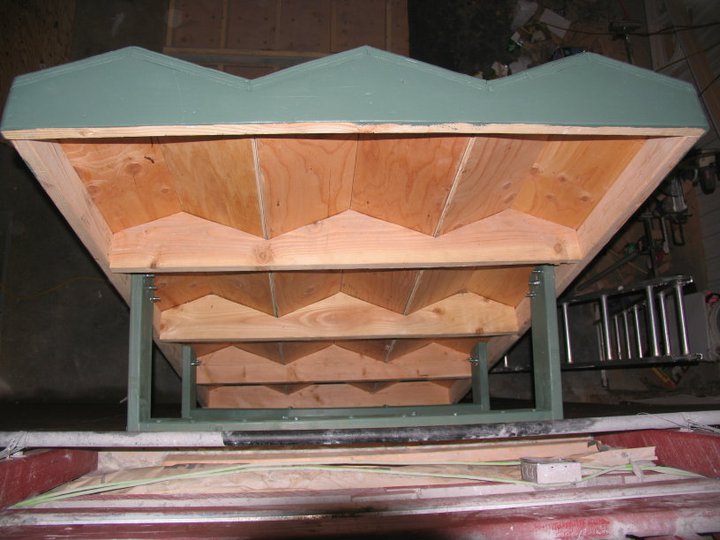
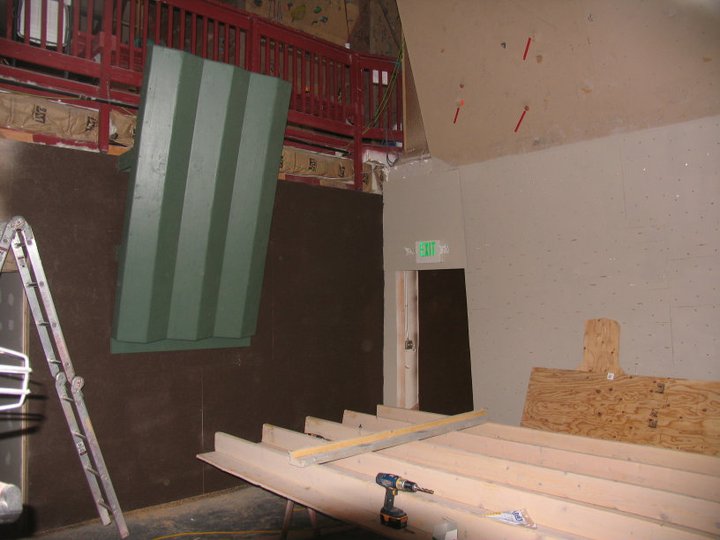
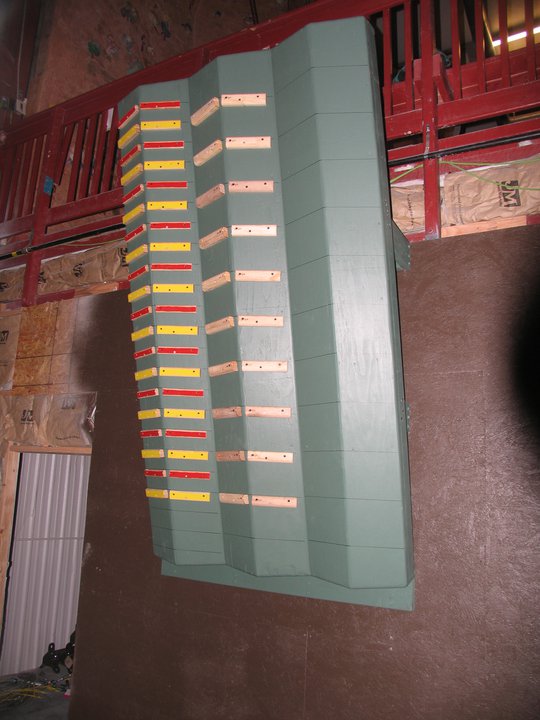
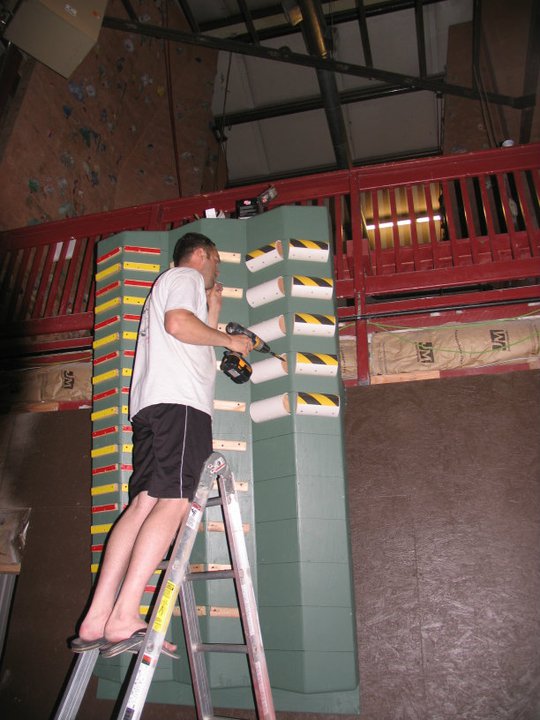
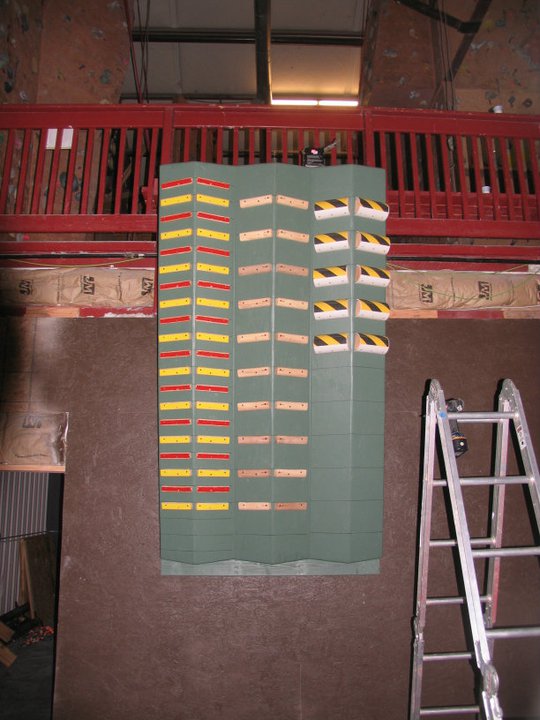
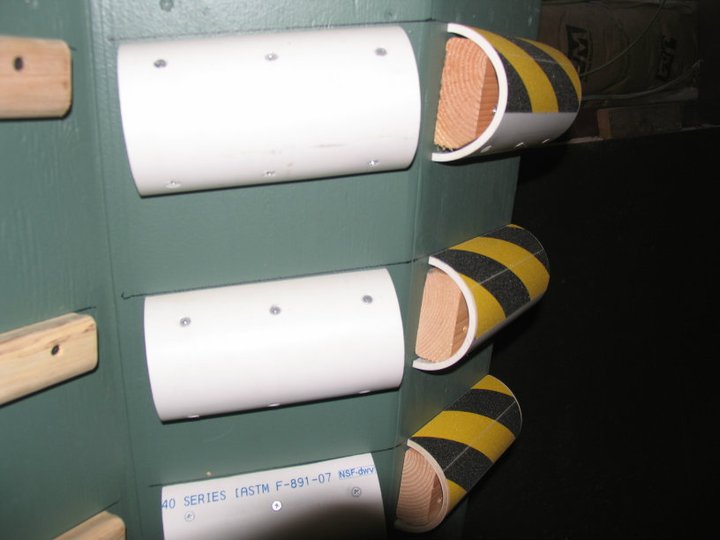
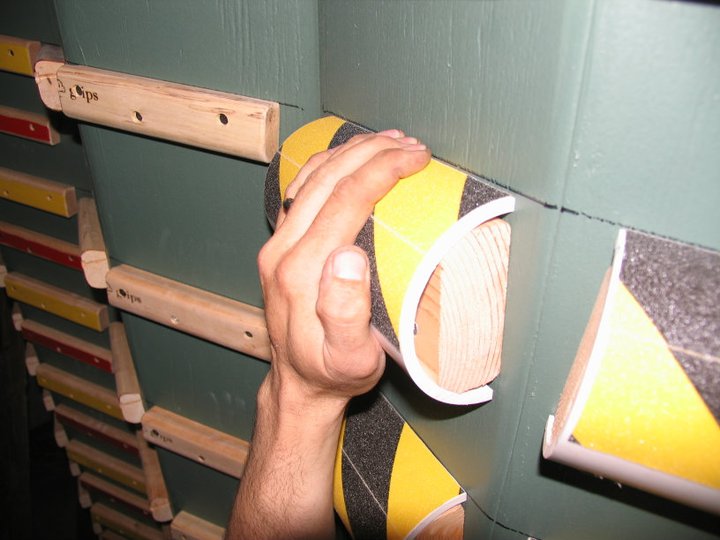
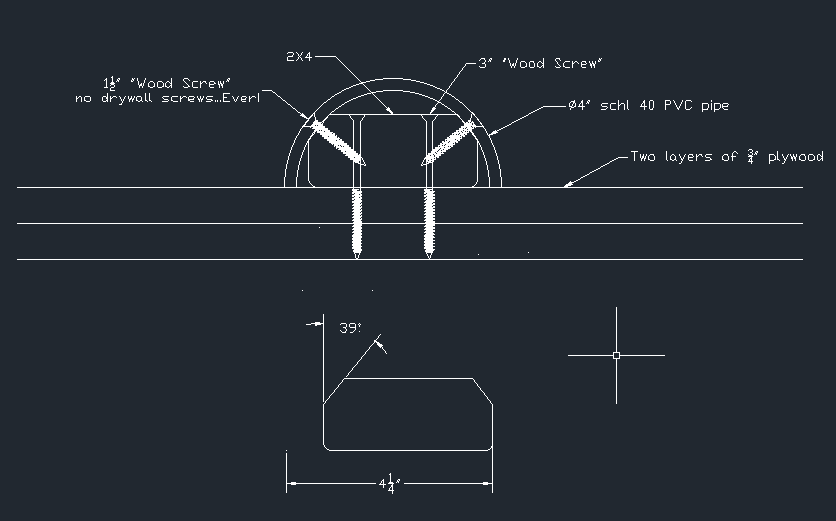
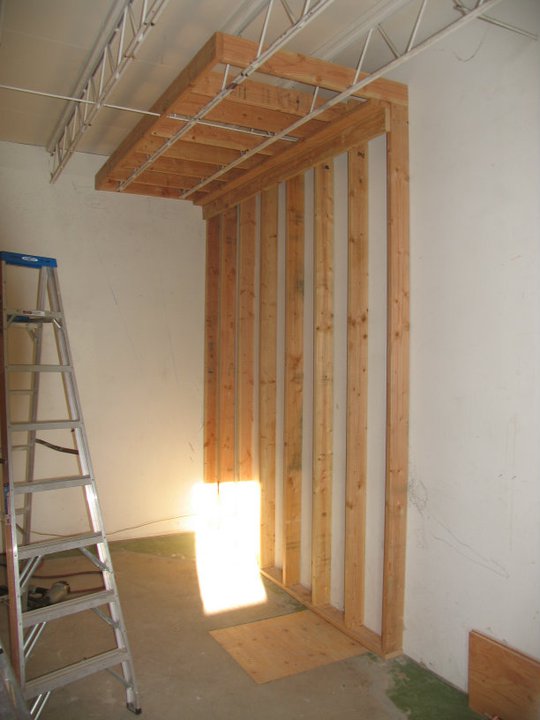
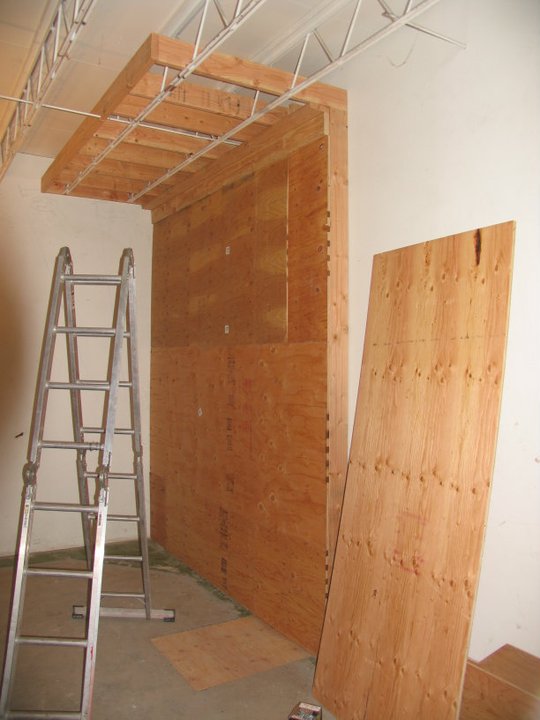
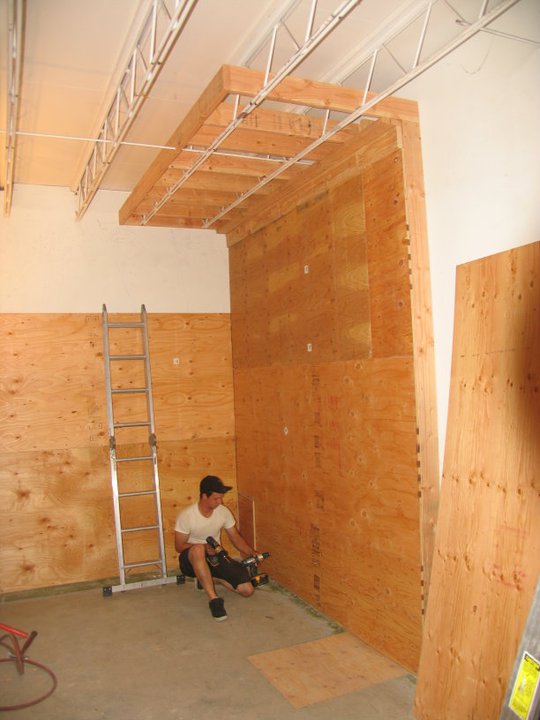
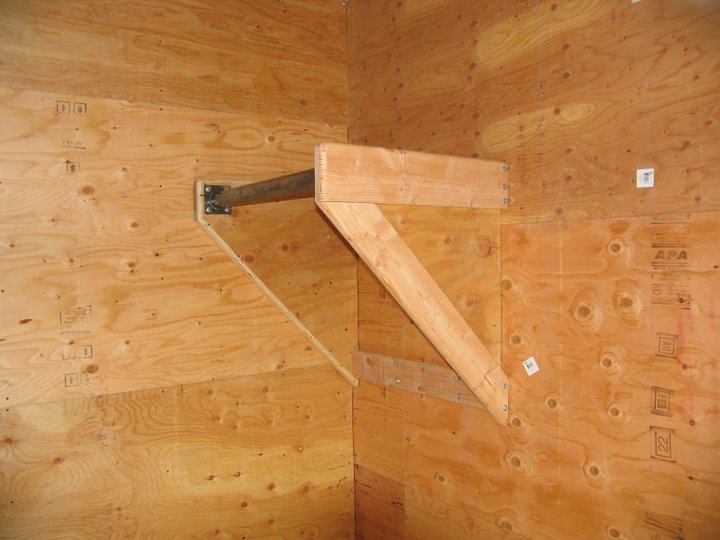
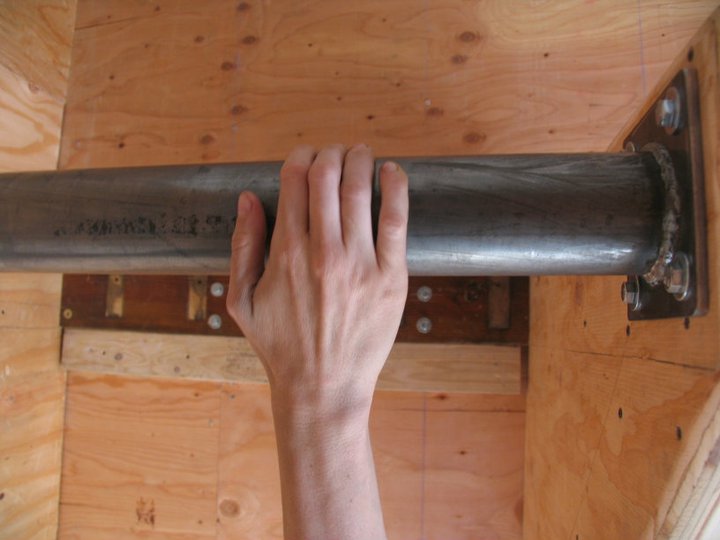
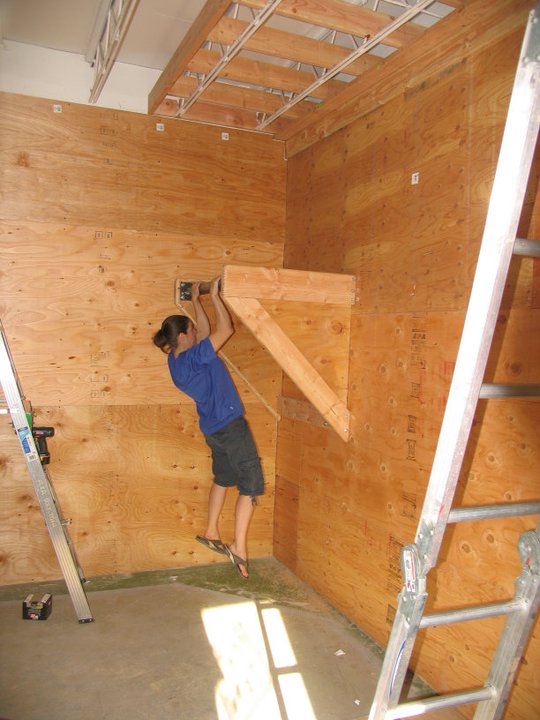
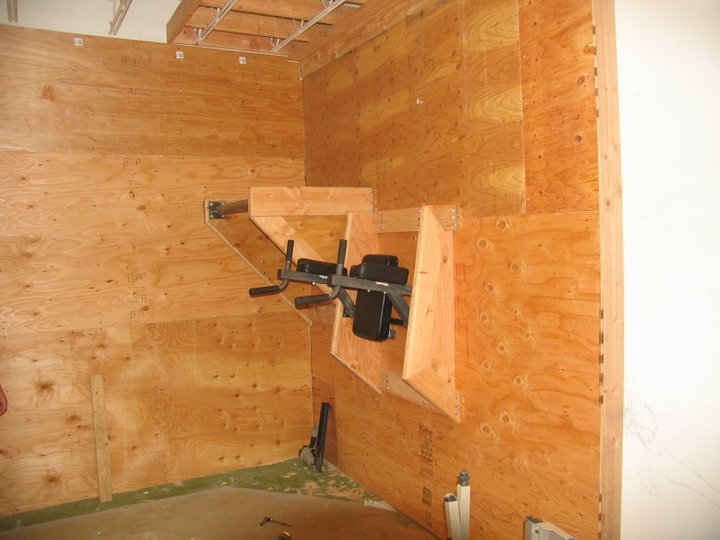

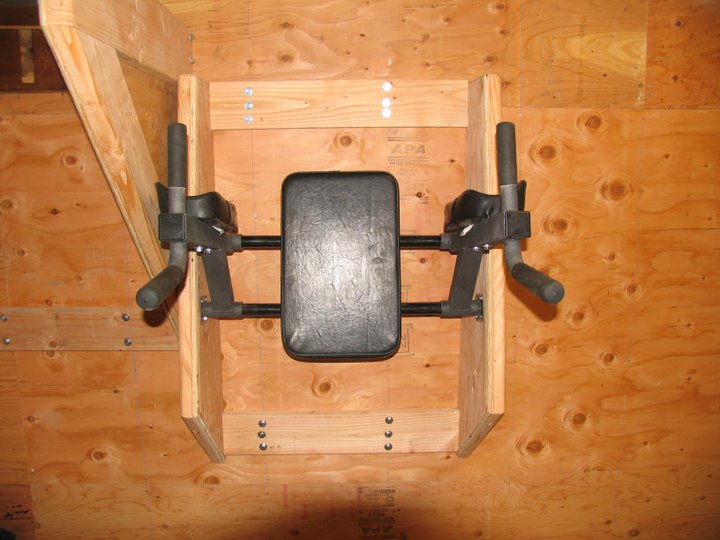
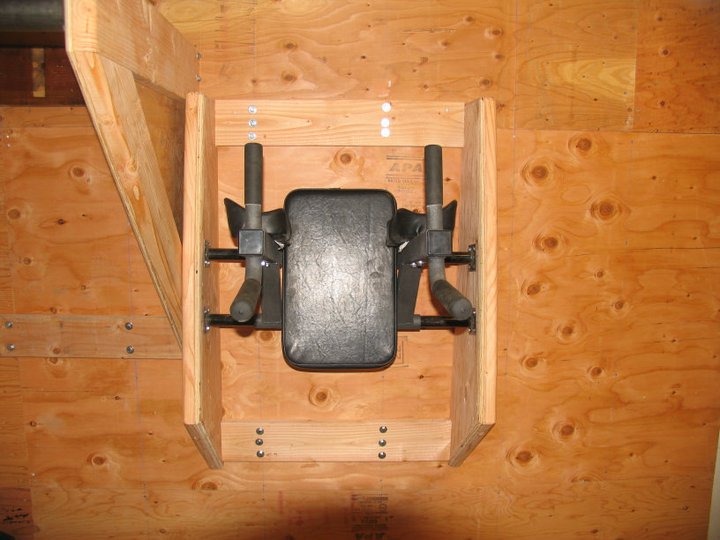
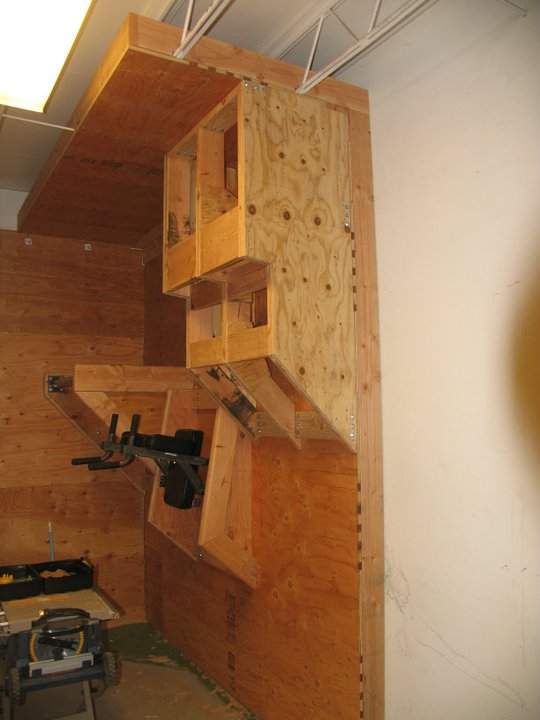
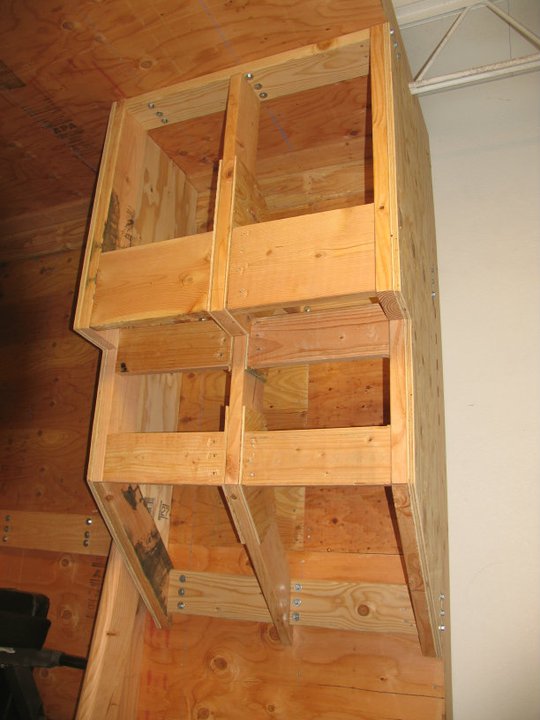
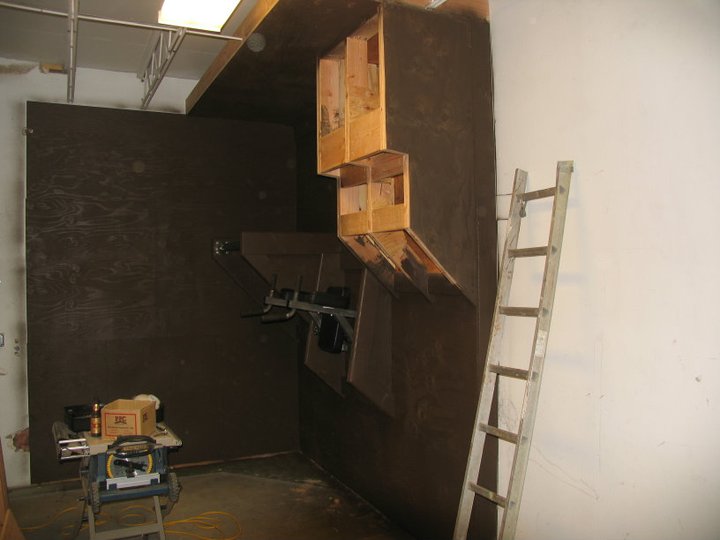
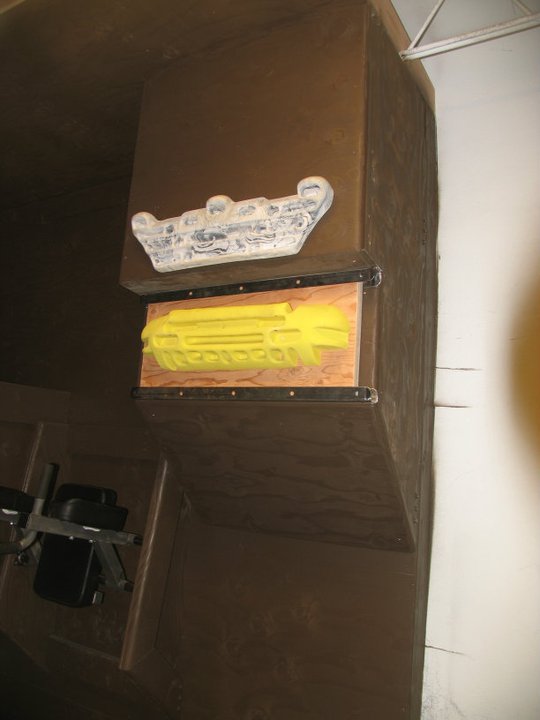
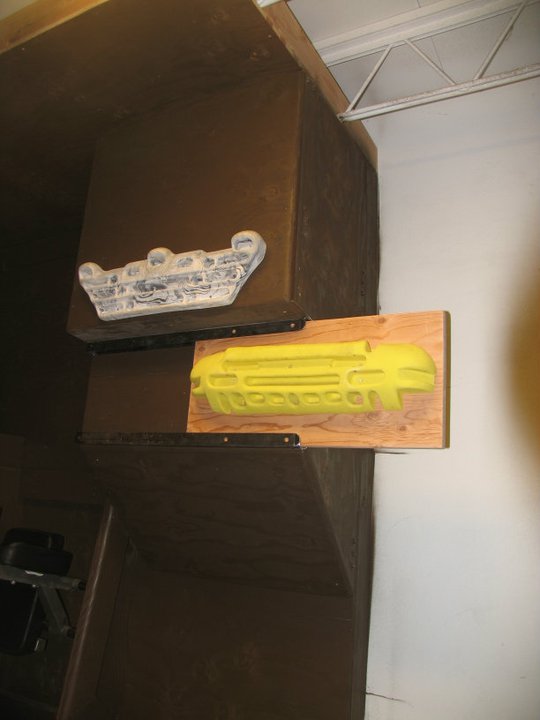
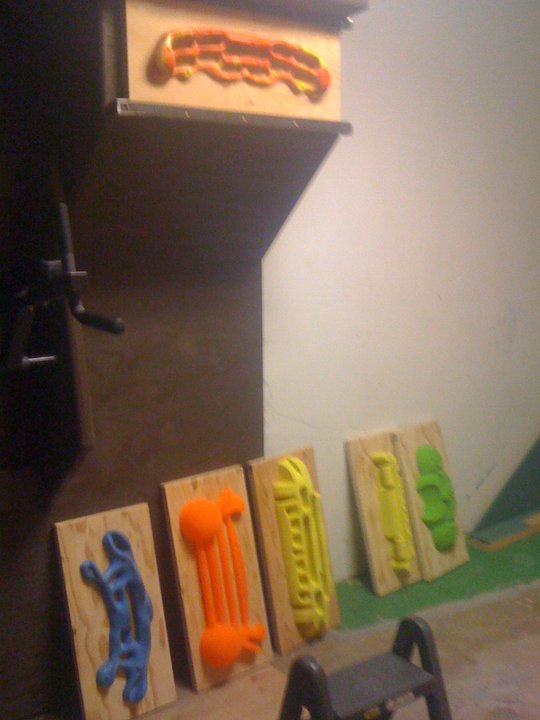

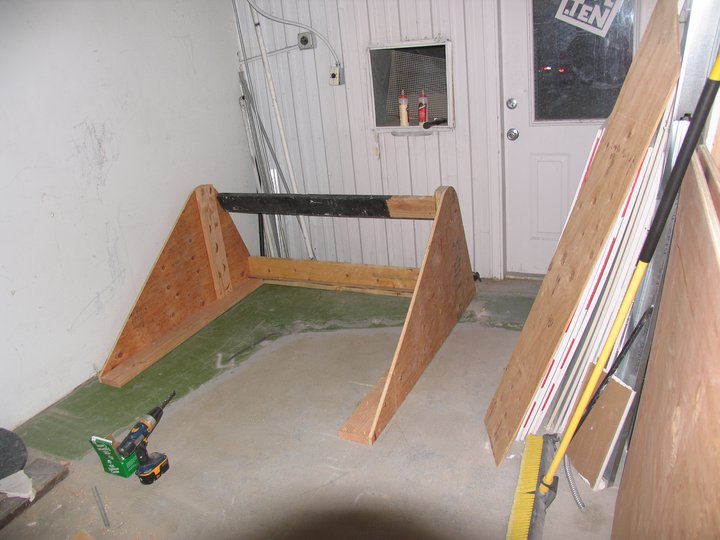
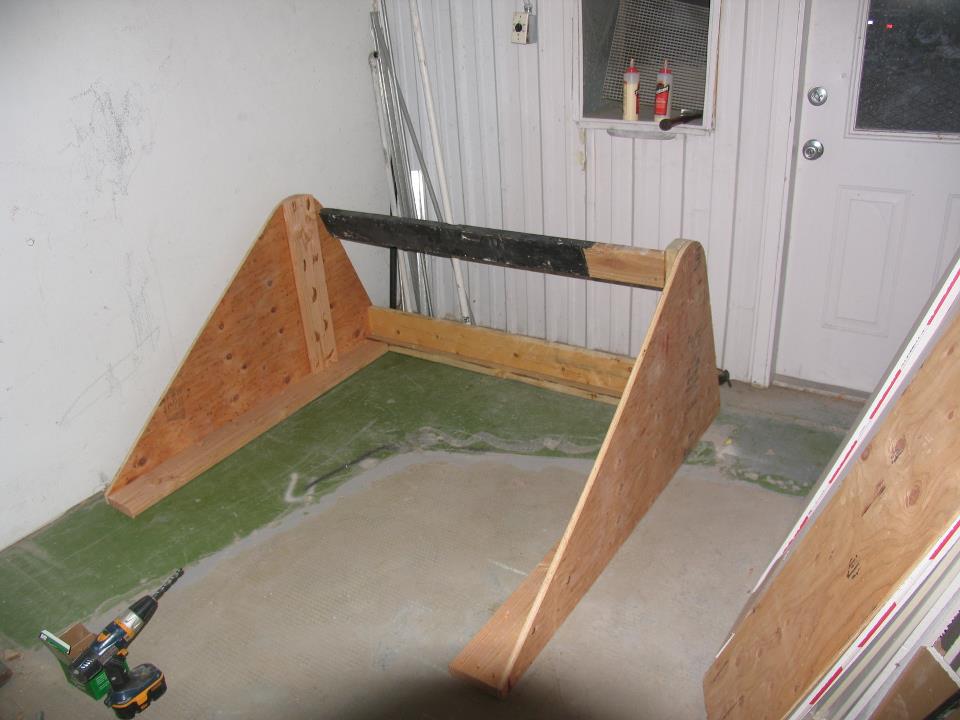
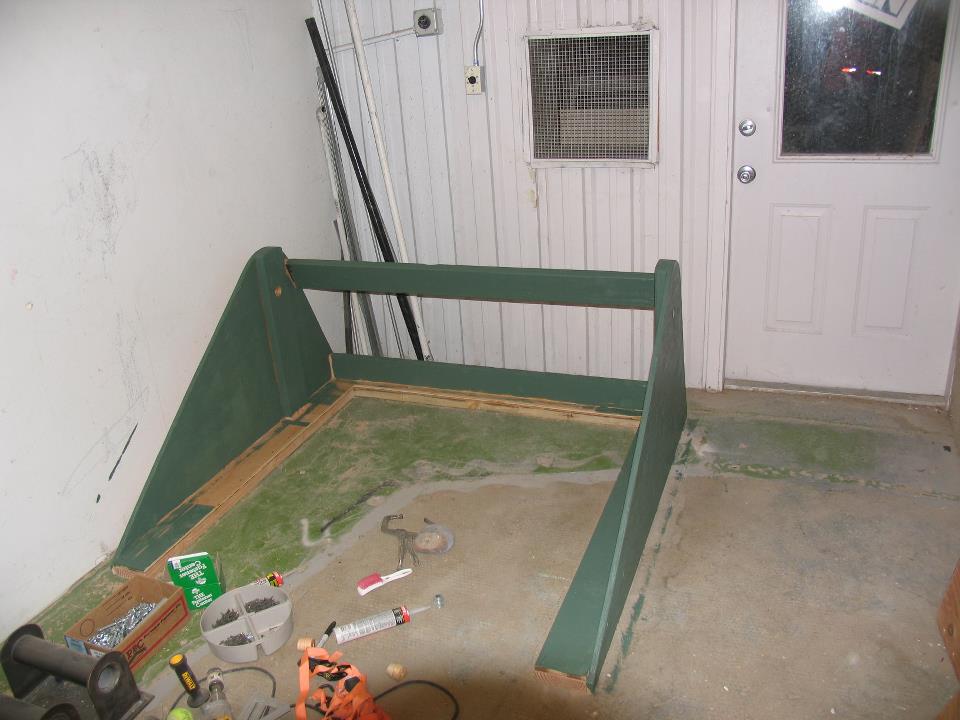
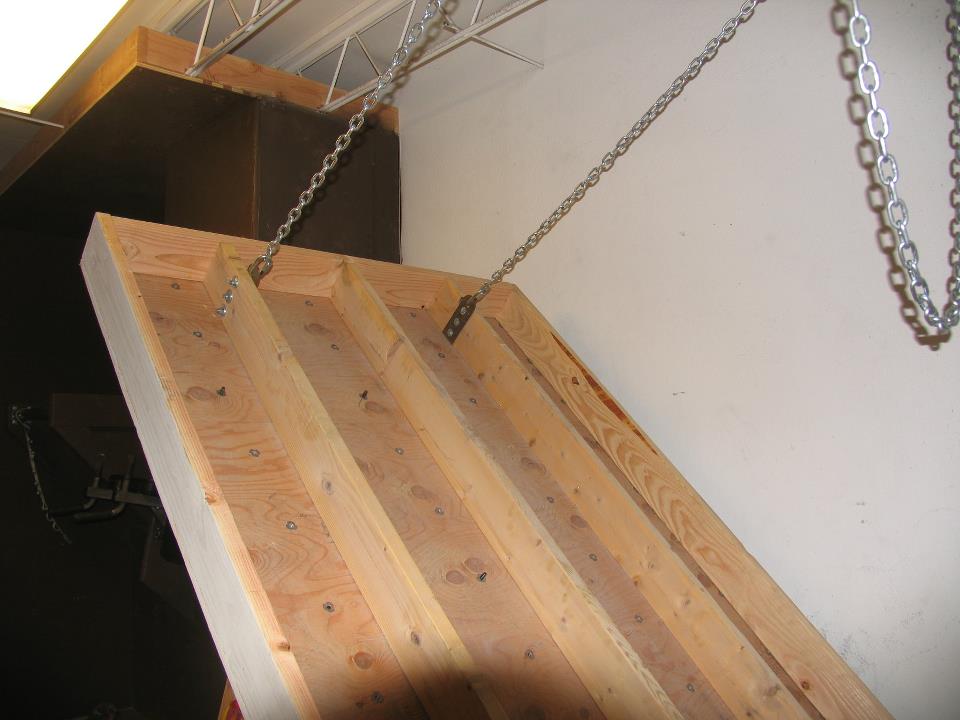


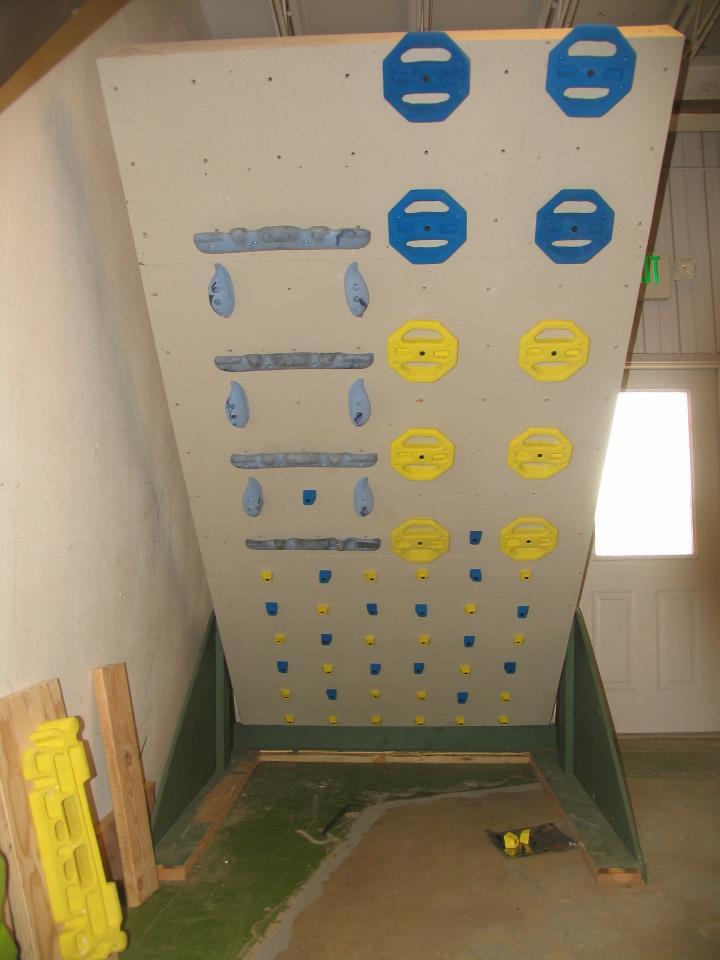
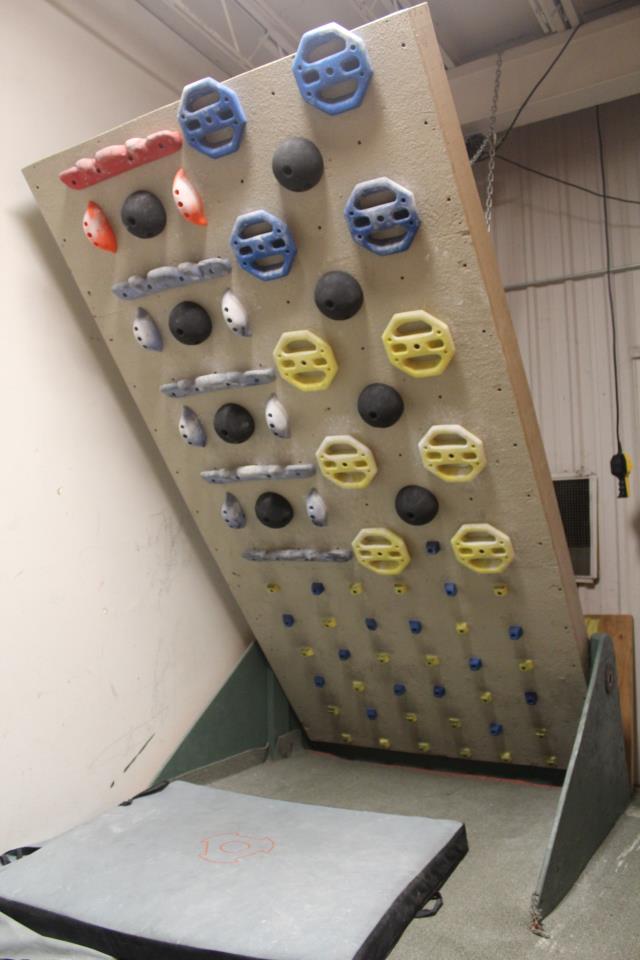
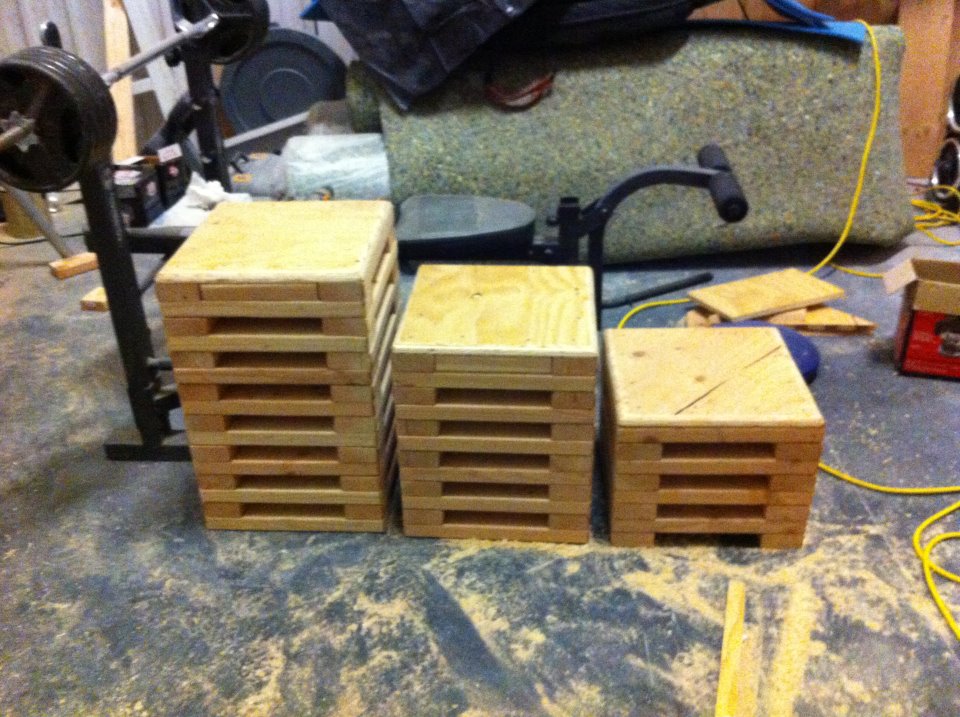

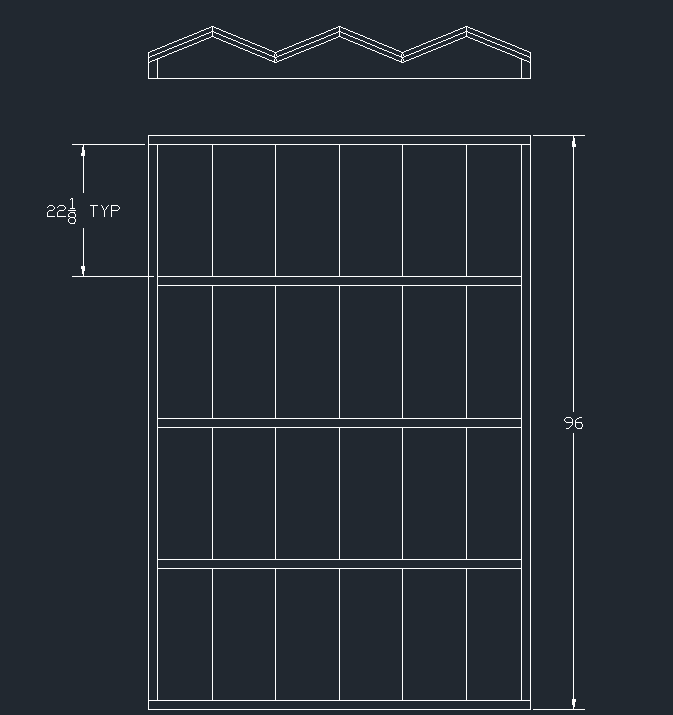
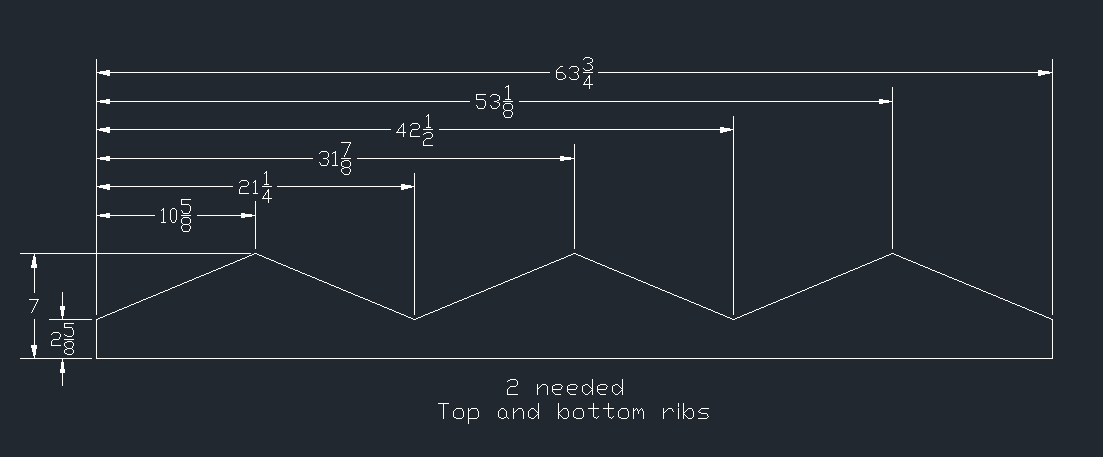
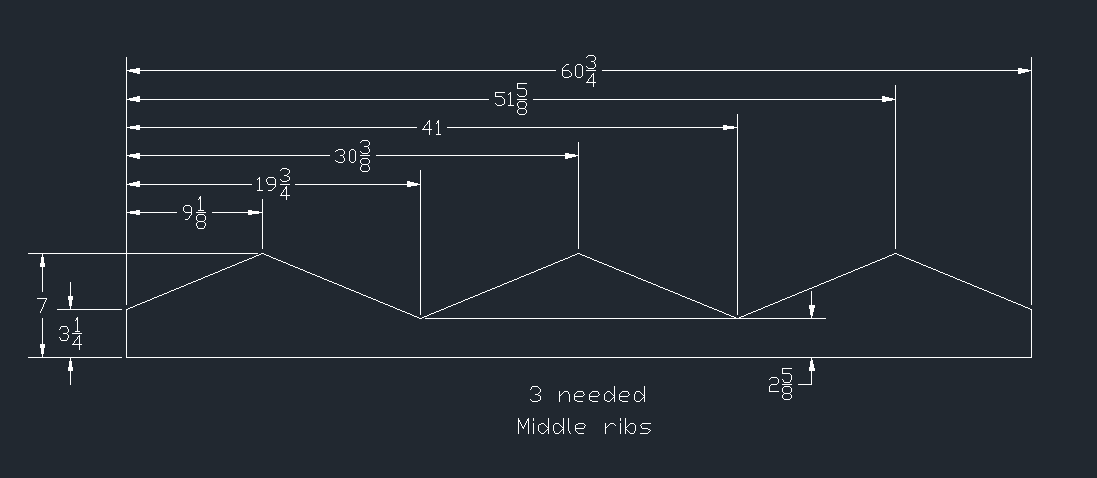
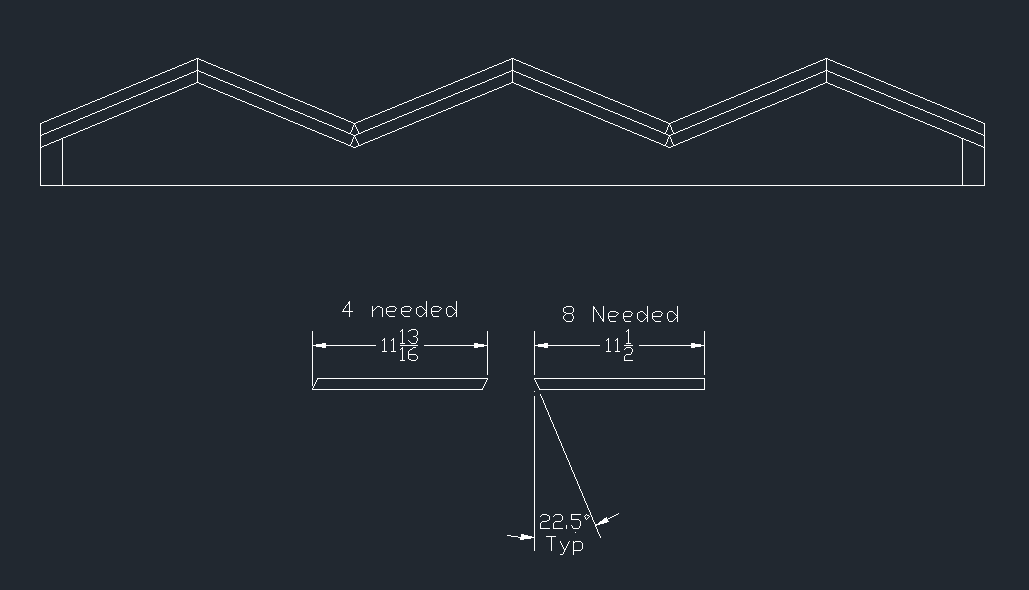
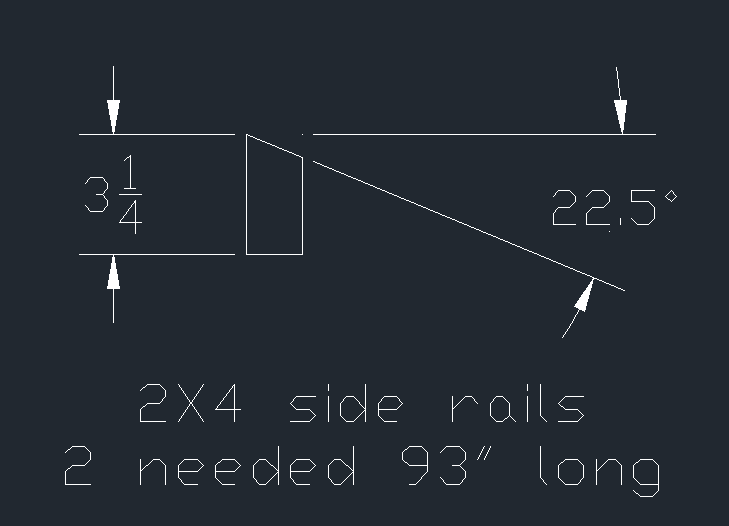
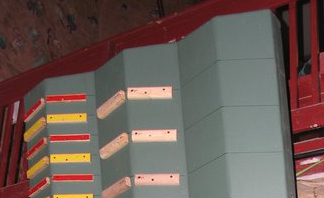
LONG LIVE THE PIT!!! My tendinitis got better just looking at your design. What kind of sixer….?
Haha, glad your psyched on my design. I’ll put it all together and post it in the next day or two. Thanks for the support… Lands End from Kannah Creek Brewery.